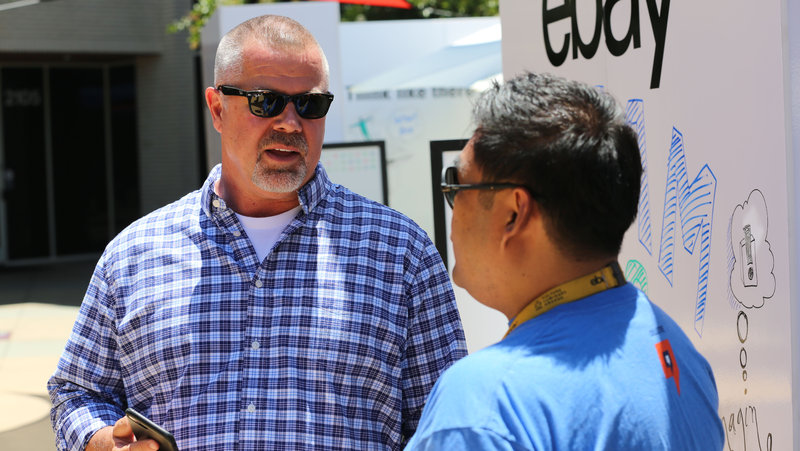eBay has had a knack for making early bets on mobile technologies that have produced meaningful results. As Apple’s iPhone celebrates its 10-year anniversary on June 29, eBay’s continuing mobile opportunities are clear. In fact, in the first quarter of this year alone, the company had $10.2 billion of sales volume completed on mobile devices.
Steve Yankovich, eBay’s Chief Product Architect, was directly involved with the development of the very first eBay mobile app when he was previously eBay’s head of mobile as the iPhone debuted. At the time, eBay was among the earliest apps for iOS.
eBay sat down with Steve to hear more about his thoughts on mobile and the what role it will continue to play in the world of retail.
Q: Tell us about how the very first eBay mobile app came to be 10 years ago, when the first iPhone arrived.
Steve: At the time when I started at eBay, mobile really wasn’t something on the radar. There was no mobile group. However, we quickly saw that big things were going on around mobile, so we created a separate team, kind of siloed off, to operate like a startup. We created a great app, and we were early with it.
Q: Looking forward, what do you see as important milestones for mobile commerce?
Steve: More friction reduction is a big key for mobile. By reducing friction, we’ll see two different types of commerce evolve and meet demands of the consumer.
The first is mission shopping. That’s when I know what I want, but now I want to find the best one out there, or the best price.
The second is more by browsing, discovery and inspiration.
Friction reduction is key for both of those. We want to anticipate and take steps before you to tell us to take them.
With respect to both mission shopping and browsing and discovery on mobile, it is key for us to put truly and exclusively relevant inventory in front of you, but for the mobile shopper, there are challenges in doing that. The mobile shopper has a small screen, and may be walking in the city, navigating crosswalks, so it’s even more important in that kind of situation to put just the right inventory in front of that person. And that doesn’t mean pulling up 1,000 things. It means that the thing the shopper sees on the screen is likely the best choice for that person. This is important for eBay, because it moves us from providing a listing-based experience to a product-based experience. Our work with structured data provides the basis for doing all of this.
Q: Obviously, maintaining a lead in mobile has produced huge advantages for eBay. What are some of the specific, new and emerging technologies that you foresee having a big impact?
Steve: One of them is a technology that we started working with early at eBay, which is image recognition. It’s still not prevalent yet, and there’s a lot of work to do, but it’s going to get to the point where it works like magic. Image recognition is going to be a big deal.
Again, this will aid in reducing friction.
From an image, especially when snapping a picture of hard goods (i.e.: electronics and vehicles) we could instantly tell what a product is, including the make and model.
But, imagine if we could take a panoramic view of an entire room and identify all the products in that room that you might want to sell or not, identifying value and whether prices are trending – it would open up so many possibilities.
Additionally, voice recognition technologies are also progressing rapidly. As voice technology gets better, we aren’t far off from having technology that will enable us to talk to eBay like I’m talking to my wife who maybe is on the computer buying me a pair of shoes while I cook.
Q: What role is personalization playing at eBay, or just in commerce in general?
Steve: Part of the work we’re doing with structured data is about moving toward better ways to identify the items that makes sense for you.
Using the data is key to personalization, but gathering it from other places such as social media trends and expressed personal preferences will also benefit. What do you pin on your social networks? What does that tell us about you?
If I understand what you’ve done historically in disparate product categories, through machine learning and AI, I could start to create browse experiences and custom product pages that are just for you.
Stay tuned as we’ll have more to share later this Fall.
Q: With the iPhone at 10 years old now, mobile is now table stakes. What’s the next big thing that will have that kind of impact?
Steve: Mobile is certainly table stakes. But, it will be interesting to see how devices evolve. How do we think about commerce when you are away from a device? The world of commerce will continue to get embedded into your daily life – whether you’re riding a bike or out with friends to dinner – we’ll look to ways to make it seamless and easy for you to shop on eBay.


